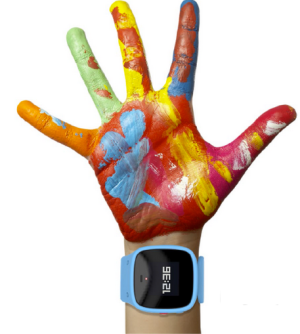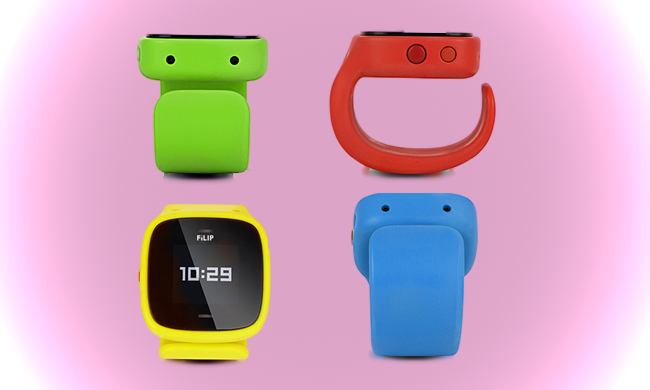It’s not easy making wearable devices for kids.
Kids grow a lot; they’re reckless; they lose things. Creating wearables for them, then, means also creating things that are designed around the way they navigate the world — which is easier said than done.
All of these realities were high on the minds of the designers of Filip, a smart locator and wearable phone made for kids. While tiny enough to fit on tiny wrists, the Filip is also bursting with a wide variety of features, including the ability to make phone calls independent of other devices.
But Filip CEO Jonathan Peachey says that designing a wearable device for kids meant that his team had to look beyond just the geeky gee-whiz functionality of a wearable cell phone: They had to design Filip so that kids would actually want to wear it.
“Wearables can’t just perform a specific function — they have to look good too. This is actually more important for kids than adults,” Peachey told VentureBeat.
 One of these design considerations, which you can see in the photo above, concerns the Filip’s wristband: Unlike the watch wristbands you’re probably used to, the one on the Filip is left open.
One of these design considerations, which you can see in the photo above, concerns the Filip’s wristband: Unlike the watch wristbands you’re probably used to, the one on the Filip is left open.
According to Peachey, Filip’s designers went this route after asking kids what they wanted in a watch. High up on their list of desires was the basic ability to be able to take the device off. “We really wanted kids to be able to embrace this as their own,” Peachey said.
Translation: Instead of making a device that violently clamped onto kids’ wrists, Filip’s team made something that slides on. It’s the design equivalent of a parent giving a kid a suggestion rather than an order. And it’s something kids respond positively to.
And then there’s the durability question. By it’s very nature, Filip spends a lot of time exposed to the world, which automatically makes it a target for all sorts of damage, including from water, sand, paint, and other hazards.
Peachey says that while Filip is designed to be durable, it does have one main weakness right now: Water.
“The first iteration of the product is water-resistant, but we’re looking at tech for the second generation that will allow us to make it water proof,” he said. (Companies like Sony and Samsung have already used such technology in their smartphones.)
But as durable and stylish as it is, the real test for Filip is going to be whether parents themselves embrace it. And probably nothing is as core to that as the device’s price, which Peachey would only say is “reasonably affordable.”
The other big question is how much it will cost parents to keep the Filip connected. Peachey can’t say just yet, but he did hint that Filip will announce a partnership with one of the major mobile carriers in the coming months.
“This is the first time such a sophisticated piece of tech was created just for a child,” Peachey argues.
VentureBeat's mission is to be a digital town square for technical decision-makers to gain knowledge about transformative enterprise technology and transact. Learn More

